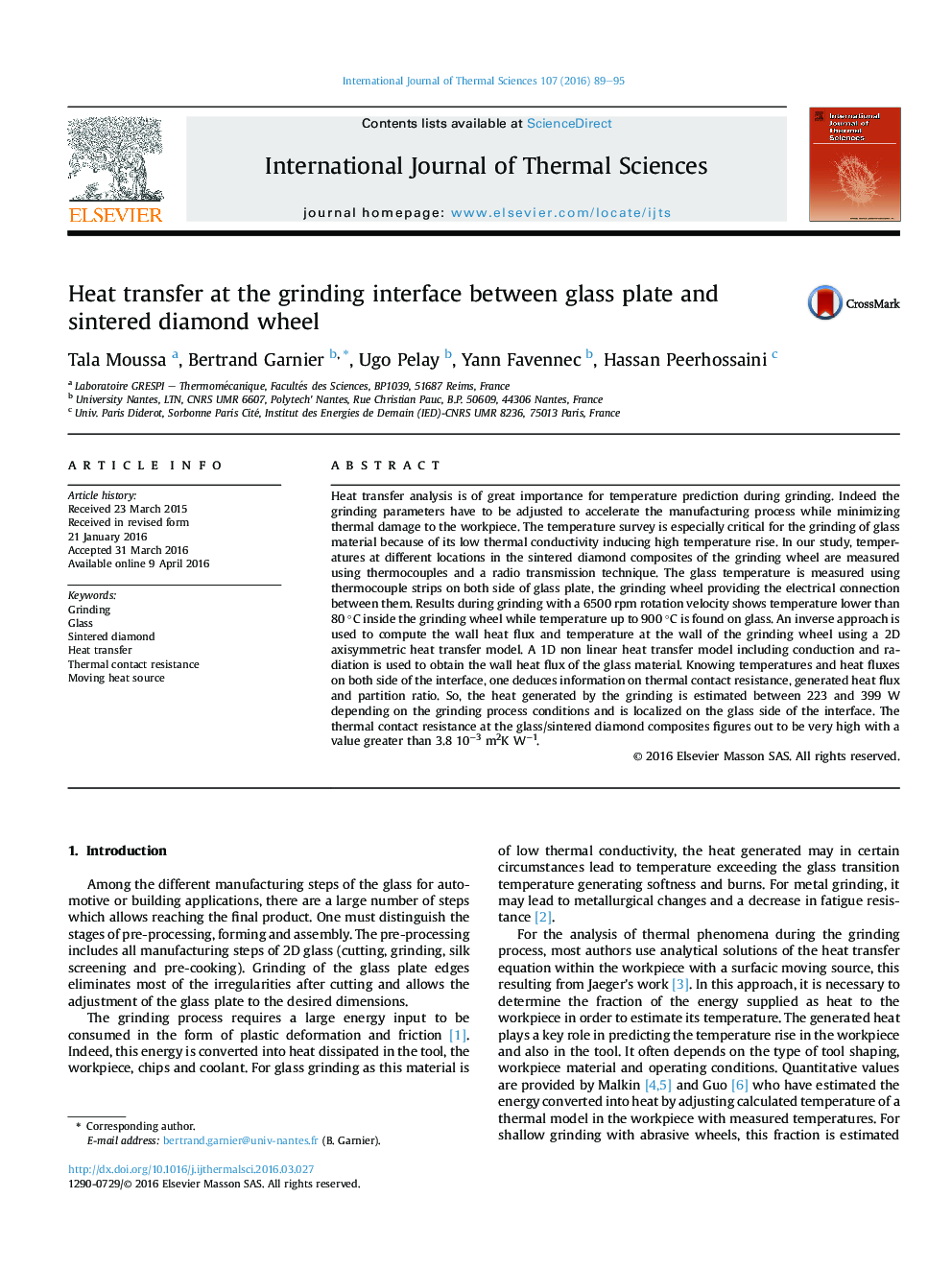| کد مقاله | کد نشریه | سال انتشار | مقاله انگلیسی | نسخه تمام متن |
|---|---|---|---|---|
| 668413 | 1458715 | 2016 | 7 صفحه PDF | دانلود رایگان |
• Thermocouples and a radio transmission technique are used to perform temperature measurements inside the grinding wheel.
• Constantan and copper foils are used to perform temperature measurement on the edge of glass plates.
• The wall temperature and heat flux are estimated on both sides of the grinding interface.
• The thermal contact resistance, the generated heat flux and the partition ratio are deduced for glass grinding.
Heat transfer analysis is of great importance for temperature prediction during grinding. Indeed the grinding parameters have to be adjusted to accelerate the manufacturing process while minimizing thermal damage to the workpiece. The temperature survey is especially critical for the grinding of glass material because of its low thermal conductivity inducing high temperature rise. In our study, temperatures at different locations in the sintered diamond composites of the grinding wheel are measured using thermocouples and a radio transmission technique. The glass temperature is measured using thermocouple strips on both side of glass plate, the grinding wheel providing the electrical connection between them. Results during grinding with a 6500 rpm rotation velocity shows temperature lower than 80 °C inside the grinding wheel while temperature up to 900 °C is found on glass. An inverse approach is used to compute the wall heat flux and temperature at the wall of the grinding wheel using a 2D axisymmetric heat transfer model. A 1D non linear heat transfer model including conduction and radiation is used to obtain the wall heat flux of the glass material. Knowing temperatures and heat fluxes on both side of the interface, one deduces information on thermal contact resistance, generated heat flux and partition ratio. So, the heat generated by the grinding is estimated between 223 and 399 W depending on the grinding process conditions and is localized on the glass side of the interface. The thermal contact resistance at the glass/sintered diamond composites figures out to be very high with a value greater than 3.8 10−3 m2K W−1.
Journal: International Journal of Thermal Sciences - Volume 107, September 2016, Pages 89–95
